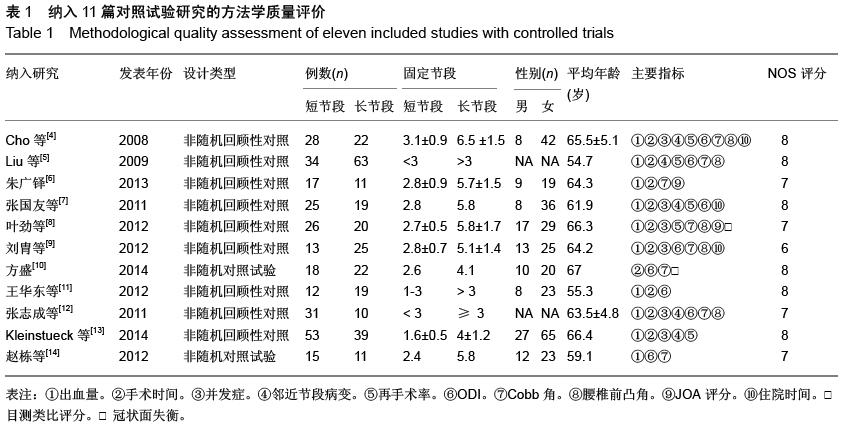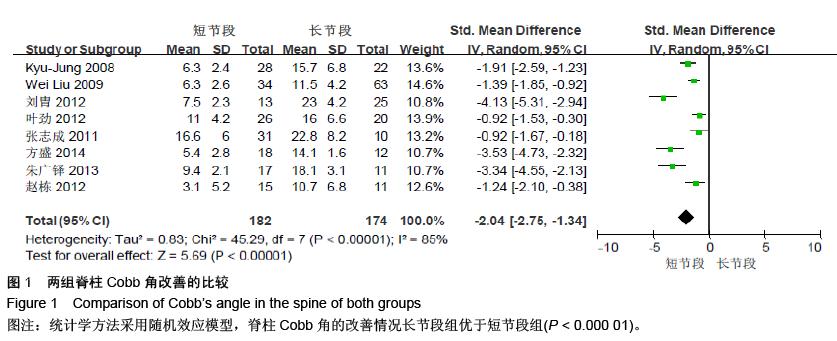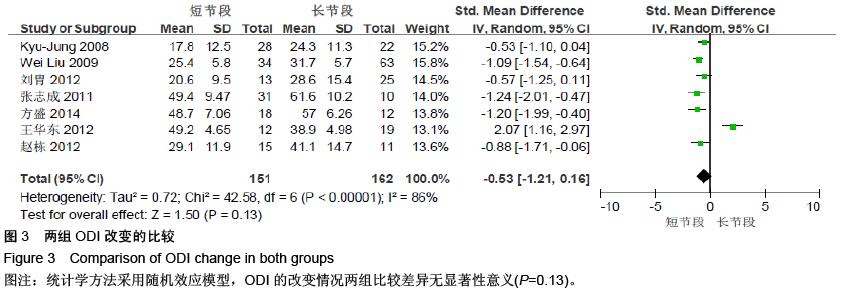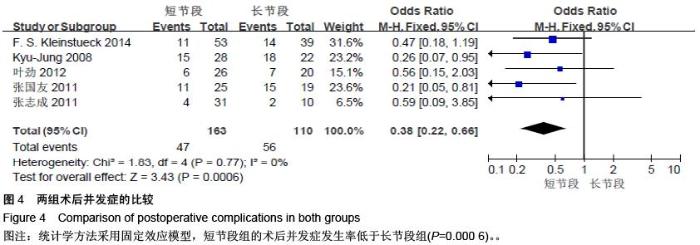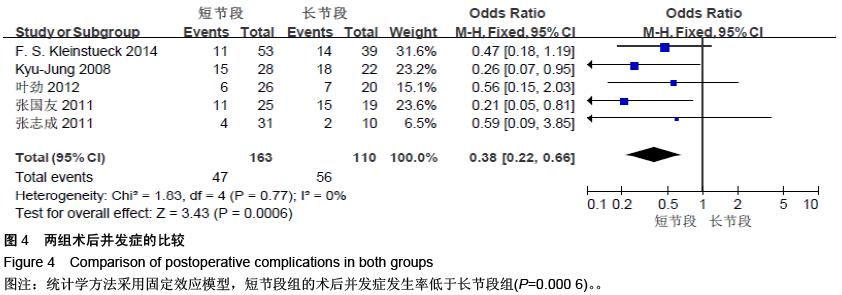| [1] Schwab FJ, Smith VA, Biserni M, et al. Adult scoliosis: A quantitative radiographic and clinical analysis. Spine. 2002;27(4): 387-392.[2] Cho KJ, Kim YT, Shin SH, et al. Surgical treatment of adult degenerative scoliosis. Asian Spine J. 2014;8(3): 371-378.[3] Birknes JK, White AP, Albert TJ, et al. Adult degenerative scoliosis:a review. Neurosurgery. 2008; 63(3 Suppl):94-103.[4] Cho KJ, Suk SI, Park SR, et al. Short fusion versus long fusion for degenerative lumbar scoliosis. Eur Spine J. 2008;17(5): 650-656.[5] Liu W, Chen XS, Jia LS, et al. The clinical features and surgical treatment of degenerative lumbar scoliosis: a review of 112 patients. Orthop Surg. 2009;1(3): 176-183.[6] 朱广铎.短节段和长节段固定融合治疗退变性腰椎侧凸的疗效观察[D].山东大学,2013.[7] 张国友,李明,朱晓东,等.后路减压联合不同融合节段固定治疗退变性脊柱侧凸疗效分析[J].脊柱外科杂志,2011, 9(6):337-341.[8] 叶劲,龙厚清,陈应东,等.后路长、短节段固定结合有限减压治疗退变性腰椎侧凸的比较研究[J].中国临床解剖学杂志,2012,30(5):568-572.[9] 刘胄,赵庆华,吴兴洲,等.短节段与长节段固定融合在退变性腰椎侧凸合并腰椎管狭窄症治疗的效果观察[J].中华医学杂志,2012,92(25):1751-1755.[10] 方盛.退变性脊柱侧凸外科治疗的临床疗效分析[D].苏州大学,2014.[11] 王华东,侯树勋,史亚民,等.退变性腰椎侧凸两种手术方式的疗效观察[J].中国骨与关节杂志,2012,11(6):574-577.[12] 张志成,任大江,孙天胜,等. 退变性腰椎侧凸合并椎管狭窄的阶梯性治疗策略[J]. 中国修复重建外科杂志, 2011, 25(8):951-955.[13] Kleinstueck FS, Fekete TF, Jeszenszky D, et al. Adult degenerative scoliosis: comparison of patient-rated outcome after three different surgical treatments. Eur Spine J. 2014, Epub ahead of print.[14] 赵栋,邓树才,孙志明,等.临床症状对退行性脊柱侧凸手术方案选择的影响[J].中华医学杂志,2012,92(17):1201-1205.[15] 唐翔,张永刚.退变性脊柱侧凸手术治疗进展[J].中华外科杂志,2015,53(5):396-400.[16] Fu KM, Bess S, Shaffrey CI, et al. Patients with adult spinal deformity treated operatively report greater baseline pain and disability than patients treated nonoperatively;however,deformities differ between age groups. Spine. 2014;39(17):1401-1407.[17] Daubs MD, Lenke LG, Bridwell KH, et al. Does correction of preoperative coronal imbalance make a difference in outcomes of adult patients with deformity? Spine(Phila Pa 1976). 2013;38(6):476-483.[18] Rousseau MA, Lazennec JY, Tassin JL, et al. Sagittal rebalancing of the pelvis and the thoracic spine after pedicle subtraction osteotomy at the lumbar level. J Spinal Disord Tech. 2014;27(3):166-173.[19] 郑召民,李中实.退变性脊柱侧凸症治疗所面临的几个问题[J].中国脊柱脊髓杂志,2014,24(8):673-676.[20] 王银,陈根元,胡龙,等.开放与微创经椎间孔椎体间融合治疗单节段退行性腰椎疾病的Meta分析[J].中国组织工程研究,2013,17(13):2415-2422.[21] 谢跃,徐用亿,王守国,等.经后路减压植骨融合内固定术治疗腰椎退变性侧凸症[J].中华医学杂志, 2011,91(41), 2931-2934.[22] 何守玉,朱锋,邱勇,等.长、短节段融合内固定治疗成人退变性脊柱侧凸并发症分析[J].中国骨与关节杂志, 2015, 14(3):176-181.[23] 郑杰,杨永宏,张冬生,等.退变性脊柱侧凸不同方式长节段固定融合术后邻近节段生物力学变化的有限元分析[J].中国脊柱脊髓杂志,2011,21(9):769-773.[24] 马华松.植入物置入内固定治疗腰椎退变性疾病[J].中国组织工程研究,2012,16(44):8332-8339.[25] Ha KY, Kim YH, Ahn JH. Is it real adjacent segment pathology by stress concentration after limited fusion in degenerative lumbar scoliosis? Spine. 2014;39(13): 1059-1066.[26] Rao RD, Gourab K, David KS. Operative treatment of cervical spondylotic myelopathy. J Bone Joint Surg Am. 2006;88(7):1619-1640.[27] 王国旗,徐韬,盛伟斌,等.不同入路治疗多节段脊髓型颈椎病:疗效与安全性的Meta分析[J].中国组织工程研究, 2014,18(4):637-644. [28] 皮国富,齐培一,刘宏建,等.腰椎融合与非融合术对邻近阶段退变影响的比较[J].中华实验外科杂志,2013,30(11): 2444-2445.[29] 张志平,郭昭庆,孙垂国,等. 退变性腰椎疾患后路减压术后脑脊液漏的相关因素分析及处理[J].中国脊柱脊髓杂志,2014,24(10):906-911.[30] Sun Y, Shen Y, Ding W, et al. Comparison in clinical outcome of two surgical treatments in degenerative scoliosis. Cell Biochem Biophys. 2014;70(1):189-193. |

